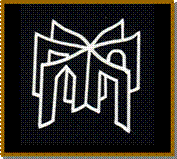Language Learning and MUDs: and Overview. Rosa Macarro Asensio.
Palabras clave:
Language learning, MUDs, Internet.Resumen
Resumen:
This article shows the potential of MUDs in Language Learning Acquisition. At the same time, it intends to serve as an introduction to these nonprofit virtual environments so that those who have never been in a MUD could be able to discover and explore these virtual text worlds in the future. It starts with a brief definition and history of these computer environments, together with some comments and ideas found in previous studies. The article continues to enumerate the several features that make MUDs ideal spaces for language learning, ending with an introductory guide to use a specific MUD, NannyMUD. It also includes extra information to access this and other similar worlds.
Referencias
Arnold, N.; Ducate L. “Future foreign language teachers’ social and cognitive collaboration in an online environment”, Language Learning and Technology, t. 10, nº 1, 2006, pages 42-66.
Bartle, R. “Hearts, Clubs, Diamonds, Spades: Players who suit MUDs”. The Journal of Virtual Environments, 1997. http://www.brandeis.edu/pubs/jove/HTML/v1/bartle.html
Bork, A. “What is needed for effective learning on the Internet?”, Educational Technology & Society, 2001, pages 139-144.
Cerratto, Pargman T.; Waern Y. “Appropriating the use of a Moo for collaborative learning”, Journal Interacting and Computers, t. 15, nº 6, 2003, pages 759-781.
Chapelle, C.A. “Technology and second language learning: expanding methods and agendas”, Journal System, t. 32, nº 4, 2004, pages 593-601.
Chu Turbee, L. MOO and IRC: what’s the big difference to the language learner? 1996. http://www.lonniechu.com/mooandchat.html
Chu Turbee, L. Mooing in a foreign language: how, why, and who? Information Technology Education Connection’s International Virtual Conference on Schooling and the Information Superhighway at Charles Sturt University, 1996.
Curtis, P. Mudding: Social Phenomena in Text-Based Virtual Realities, 1991.
Haas, M.; Gardner, C. “Moo in Your Face: Researching, Designing, and Programming a User-Friendly Interface”, Computers and Composition, t. 16, Dakota State University, Salt Lake College, 1999, pages 341-358.
History of MUDs available at http://en.wikipedia.org/wiki/MUDs
Holmevik J. R.; Haynes, C. Mooniversity: A Student’s Guide to Online Learning Environments, Estados Unidos, Allyn & Bacon, 2000.
http://tecfa.unige.ch/edu-comp/WWW-VL/eduVR-page.html
http://www.nicoladoering.de/Hogrefe/keegan.htm
http://www.scara.com/~ole/literatur/mudding.html
Ingram, A. L.; Hathorn, L. G.; Evans, A. “Beyond chat on the internet”, Computers and Education, t. 35, 2000, pages 21-35.
Jin, Q. “Design of a virtual community based interactive learning environment”, Information Sciences, t. 140, Japan, 2002, pages 171-191.
Keegan M. “A Classification of MUDs”, Journal of MUD Research, Cambridge, 1995.
Mayans i Planeéis J. “MUDS. Rol on-line (1) y (2)”, iWorld, t. 26 2000, pages 56-64. http://www.cibersociedad.net/archivo/articulo.php?art=25
Mortensen, T.E. “WoW is the New MUD: Social Gaming from Text to Video”, Games and Culture, Vol. 1, nº 4, 2006, pages 397-413.
Reid E. Cultural Formations in Text-Based Virtual Realities, University of Melbourne, 1994. http://www.nicoladoering.de/Hogrefe/reid94a.htm
Schneider, D.K. Educational Technology: Educational VR (MUD) sub-page, 1996.
Schwartz, A. “Comments on Mud Research”, The Journal of Virtual Environments, 1997. http://www.brandeis.edu/pubs/jove/HTML/v1/intro.html
Sempsey J. The Psycho-Social Aspects of Multi-User Dimensions In Cyberspace, In Fulfillment of the Requirements for The Comprehensive Examinations for the Department of Psycho-educational Proceses, Temple University, 1995.
Shield, L.; Weininger, M. J.; Davies, L. B. MOOing in L2: constructivism and developing learner autonomy for technology-enhanced language learning, 1999. http://jaltcall.org/cjo/10_99/mooin.htm
Towell, J.; Towell, E. “Presence in Text-Based Networked Virtual Environments or MUDS”, Presence-Teleoperators and Virtual Environments, t. 6, nº 5, 1997, pages 590-595.
Turbee, L. MOO and IRC: what’s the big difference to the Language Learner?, 1996. http://web.syr.edu/~lmturbee/mooyirc.html
Turbee, L. “Educational MOO: Text-Based Virtual Reality for Learning in Community”, ERIC Digest, 1997.
Warschauer, M. “Computer-assisted language learning: An introduction. In S Fotos”, Multimedia language teaching, Tokio, Logos International, 1996, pages 3-20.
Descargas
Publicado
Número
Sección
Licencia

Tejuelo se publica bajo una licencia Creative Commons Reconocimiento-NoComercial-SinObraDerivada 3.0 España.


.jpg)



